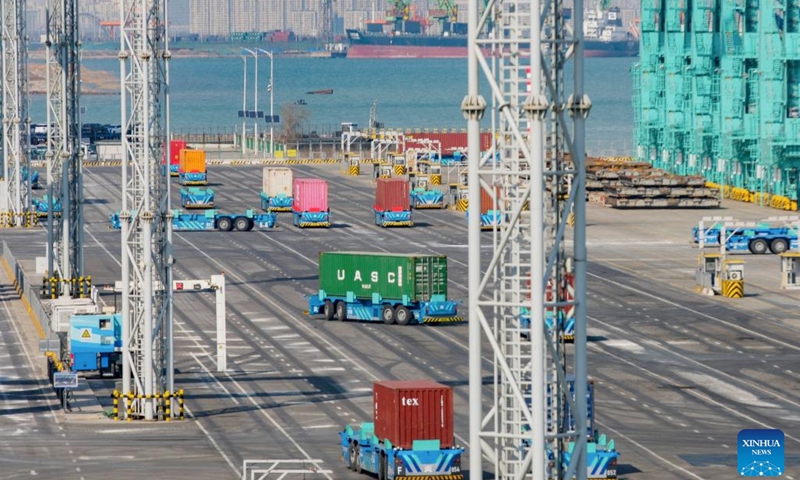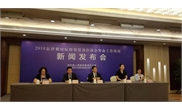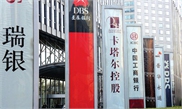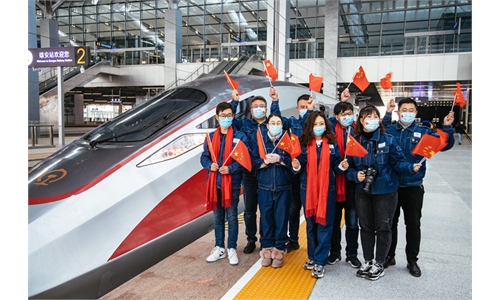Coordinated development deepens across Jing-Jin-Ji region in 9 years
Fruitful outcomes made in industrial upgrading, transport and environment protection

Smart delivery robots work at the full Internet of Things container terminal of Tianjin Port in north China's Tianjin, Feb. 21, 2023. As the "maritime gateway" to the Beijing-Tianjin-Hebei region, Tianjin Port has been ceaselessly advancing the construction of a smart port, boosting the coordinated development of the region with fresh impetus.(Photo: Xinhua)
China's coordinated development of Beijing, North China's Tianjin Municipality and Hebei Province - a regional city cluster called Beijing-Tianjin-Hebei, with its conveniently shortened form "Jing-Jin-Ji" - witnessed its ninth anniversary on Sunday.Over the nine years, remarkable achievements have been made in the key fields of industrial upgrading, traffic management and environmental protection, bringing the region's total GDP to 10 trillion yuan ($1.44 trillion) in 2022, up 1.8 times compared with the figure in 2013.
In February 2014, China initiated a key strategy to coordinate the development of Beijing, Tianjin and Hebei to create a model with a better economic structure, cleaner environment and improved public services.
A prominent task of the strategy is to move non-capital functions out of Beijing to treat "urban ills" such as traffic jams and pollution in the Chinese capital. Approximately 3,000 manufacturing and polluting enterprises in Beijing have been shut down, and nearly 1,000 markets and logistics centers have been relocated since 2014, according to data released by the Beijing Municipal Commission of Development Reform on Thursday.
Beijing's Zhongguancun, also known as China's Silicon Valley, is an important source of technological innovation in the Jing-Jin-Ji region. To date, enterprises based in Zhongguancun have set up more than 9,500 branches in Tianjin and Hebei. The total turnover of Beijing's technology contracts flowing to the two localities exceeded 210 billion yuan as of 2022, shows data from the commission.
Transportation development has been a basis for the coordinated development of the Jing-Jin-Ji region. A "one-hour traffic circle" has now come into being among Beijing, Tianjin and some cities in Hebei.
On December 31, 2022, a new expressway between Beijing and Xiong'an New Area in Hebei Province opened to traffic, reducing travel time from 80 to 50 minutes.
According to data released by the Beijing Municipal Bureau of Statistics, the length of high-speed roads in the Jing-Jin-Ji region totaled 10,585.5 kilometers by the end of 2022, up 32.6 percent compared with the end of 2014, while the length of commercial railways totaled 10,848 kilometers by the end of 2022, up 38.3 percent compared with the end of 2014.
In addition, this coordinated development has also brought a cleaner and greener environment to people in the region. Last year, the average concentration of PM2.5, small particles of pollution, in Beijing, Tianjin and Hebei dropped over 60 percent compared with 2013.
The Hebei provincial government recently held a meeting, pointing to stepped-up efforts in coordination with Beijing and Tianjin in railways, roads, ports and aviation to build the province's advantage in logistics globally, to become a core industrial hub and agricultural product base, while joining hands with Tianjin to build a port cluster around the Bohai Sea, according to a statement on the provincial government website on Saturday.
Tianjin municipal government vowed in a meeting on Saturday that it will convert the strategic advantage of coordinated development of the Jing-Jin-Ji region along with Tianjin's advantages in industry, technologies and ports to sustainable momentum of Tianjin's high-quality development.
Model of urban development
In order to further relieve Beijing's non-essential role and advance the coordinated development of the Jingjingji region, Beijing's two "wings" - the city's two sub-centers in the eastern Tongzhou district and in Xiongan New Area to the southern end of Beijing - are taking shape.
Dubbed China's youngest city and "city of the future," Xiongan is designed to become a zone for innovation, a digital city synchronized with a brick-and-mortar counterpart, and be a livable and business-friendly area.
Currently, construction of the new area is forging ahead at full throttle, and centrally administered state-owned enterprises have set up more than 140 institutions there.
"I participated in the construction of Xiongan since the very beginning. I'm proud to say that I have witnessed the clusters of buildings rise from the ground, groups of enterprises set up businesses and cutting-edge technologies can be seen everywhere," Yang Ming, head of China Mobile IoT Company Ltd's business in Xiongan, told the Global Times.
Yang said he is confident about Xiongan's development, saying that he and his colleagues will work harder to contribute to the "city of the future."
Wang Chunlei, a manager with an urban development subsidiary with Chinese infrastructure giant China Railway Construction Corp, told the Global Times that during the construction of a commercial building complex near the Xiongan High-speed Railway Station, high standards were applied.
"Prototype rooms are constructed first, and only after the prototype passes supervision and checkups can we proceed to construct at scale. Each following project is ensured to have the same level of high-quality of the prototype room," Wang said.
The world's first ultra-high voltage (UHV) power transmission project with alternating current double-circuit network was built in Xiongan New Area, according to a document sent to the Global Times by China Energy Engineering Corp (Energy China), which participated in the survey and design of the project.
The 1,000-kilovolt UHV power transmission project between Xiongan and Shijiazhuang, provincial capital of Hebei, went into operation in June 2019, which laid the foundation for 100 percent clean energy supply to the Xiongan New Area and helps meet power load needs in the Beijing-Tianjin-Hebei region, said Energy China.
Greater potential to be released
The 20th National Congress of the Communist Party of China held in October 2022 urged efforts to promote coordinated development in the Beijing-Tianjin-Hebei region and build the Xiongan New Area to a high standard.
The future coordinated development of the Beijing-Tianjin-Hebei region will be promoted through goal-oriented and problem-oriented approaches, Chen Yao, secretary general of the China Association of Regional Economics, told the Global Times on Sunday.
"While coordinated development in the region was focused on tackling Beijing's 'urban ills' between 2013 and 2022, authorities will shift the focus to improving its overall competitiveness to form a world-class city cluster by 2030 as the central government has planned," Chen said.
Compared with urban clusters in the Yangtze River Delta and Guangdong-Hong Kong-Macao Greater Bay Area, there is bigger room to improve Jing-Jin-Ji's competitiveness, he told the Global Times.
According to Chen, the Jing-Jin-Ji region should continue to strengthen its connections in transport, information and other sectors to magnify the spillover effects of Beijing to drive industrial transformation and upgrading in Tianjin and Hebei Province, as well as increase innovation and industry coordination in the entire region.
By taking the opportunity of the high-quality integrated development of Beijing's Tongzhou district, and Sanhe, Dachang and Xianghe in Hebei, authorities should actively explore a path toward coordination in areas like city planning, public services and the business environment to build a new example for regional development in the new era, said Chen on Sunday.



